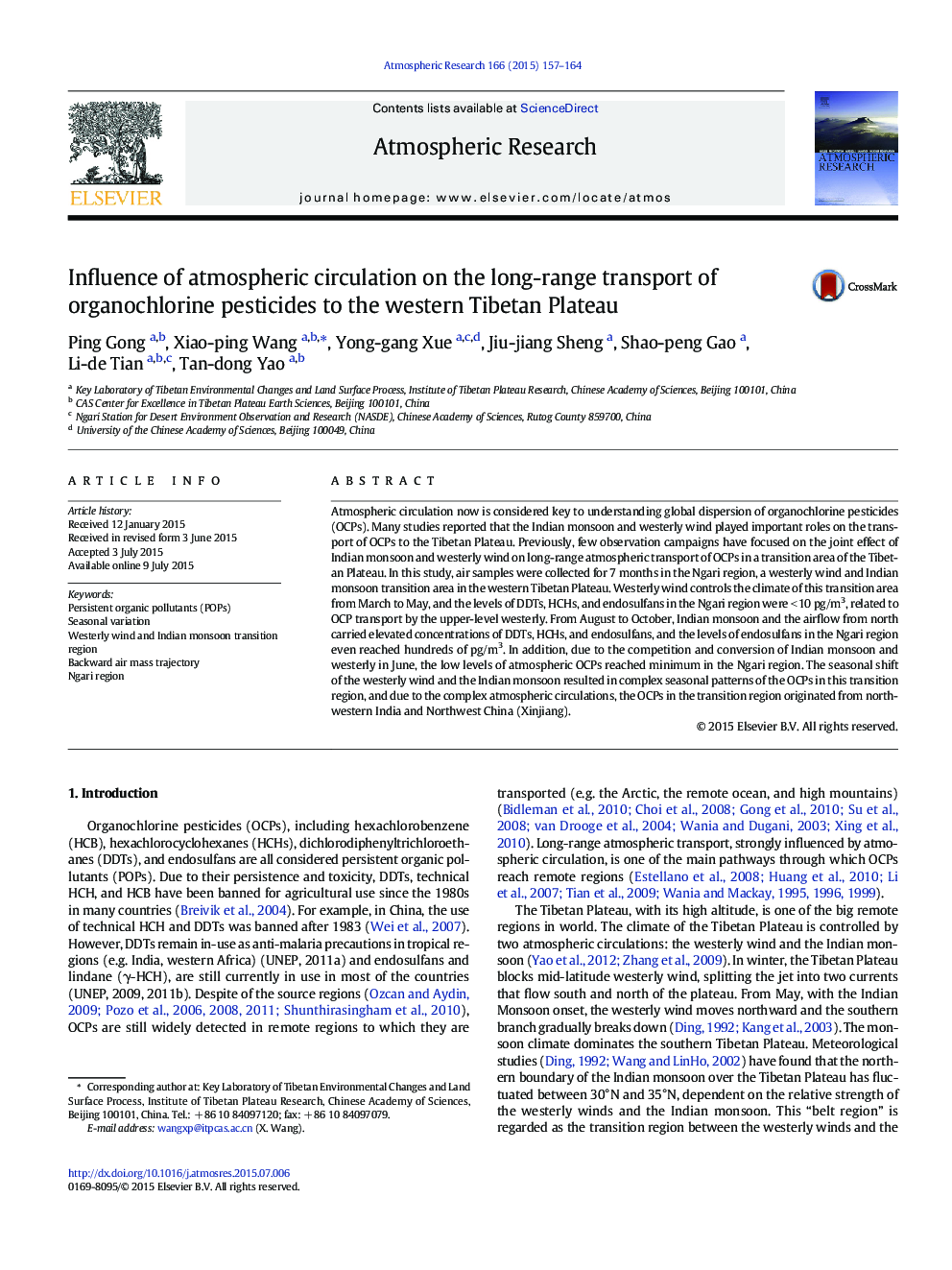| Article ID | Journal | Published Year | Pages | File Type |
|---|---|---|---|---|
| 4449737 | Atmospheric Research | 2015 | 8 Pages |
•Indian monsoon and air flow from the north cooperatively brought OCPs to Ngari.•The heights of air masses influenced the OCP input from source regions to Ngari.•The competition of westerly and Indian monsoon may hinder OCP transport to Ngari.
Atmospheric circulation now is considered key to understanding global dispersion of organochlorine pesticides (OCPs). Many studies reported that the Indian monsoon and westerly wind played important roles on the transport of OCPs to the Tibetan Plateau. Previously, few observation campaigns have focused on the joint effect of Indian monsoon and westerly wind on long-range atmospheric transport of OCPs in a transition area of the Tibetan Plateau. In this study, air samples were collected for 7 months in the Ngari region, a westerly wind and Indian monsoon transition area in the western Tibetan Plateau. Westerly wind controls the climate of this transition area from March to May, and the levels of DDTs, HCHs, and endosulfans in the Ngari region were < 10 pg/m3, related to OCP transport by the upper-level westerly. From August to October, Indian monsoon and the airflow from north carried elevated concentrations of DDTs, HCHs, and endosulfans, and the levels of endosulfans in the Ngari region even reached hundreds of pg/m3. In addition, due to the competition and conversion of Indian monsoon and westerly in June, the low levels of atmospheric OCPs reached minimum in the Ngari region. The seasonal shift of the westerly wind and the Indian monsoon resulted in complex seasonal patterns of the OCPs in this transition region, and due to the complex atmospheric circulations, the OCPs in the transition region originated from northwestern India and Northwest China (Xinjiang).
